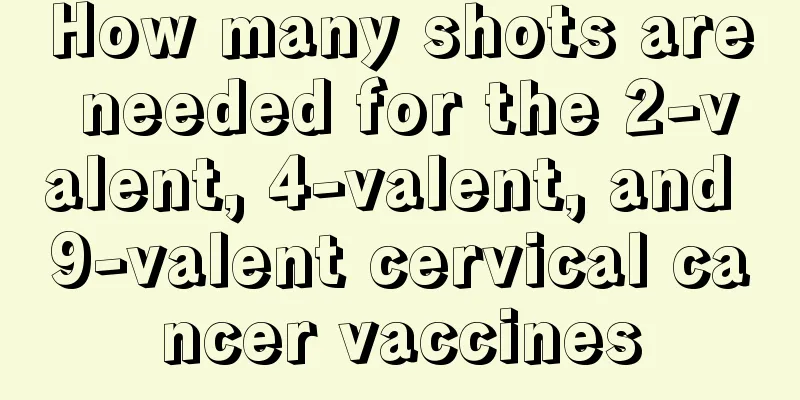How many shots are needed for the 2-valent, 4-valent, and 9-valent cervical cancer vaccines

|
Whether it is bivalent, quadrivalent or nonavalent, the cervical cancer vaccine requires three injections to effectively prevent cervical cancer. 1. Vaccine types and vaccination procedures The main difference between the bivalent, quadrivalent and nine-valent vaccines is the types of viruses they protect against. The bivalent vaccine targets HPV types 16 and 18, the quadrivalent vaccine adds types 6 and 11, and the nine-valent vaccine covers more types. No matter which one you choose, the vaccination process is three shots. After the first shot, you need to wait two months before getting the second shot, and the last shot is given six months later. 2. Antibody production and mechanism of action After the first shot, the body begins to produce antibodies, but the amount is limited and the duration is short. The second shot significantly increases the level of antibodies, allowing them to stay in the body longer. The third shot further increases the amount and durability of antibodies, ensuring long-term protection. 3. Applicable populations of different valent vaccines The bivalent vaccine is suitable for women aged 9 to 45 and mainly targets high-risk viruses for cervical cancer. The quadrivalent and nine-valent vaccines are suitable for people aged 9 to 26, with the latter providing broader protection. Which vaccine to choose can be determined based on age, budget and personal health status. 4. The best time to get vaccinated The best time to get vaccinated is before your first sexual intercourse, so you can get protection before you are exposed to the virus. Even if you have already started having sex, vaccination is still beneficial and can reduce the risk of infection. 5. Precautions after vaccination You may experience mild side effects after vaccination, such as pain at the injection site, dizziness, or fever. These are usually temporary and not a cause for concern. Maintaining a healthy lifestyle and avoiding unnecessary risk of infection are good ways to increase the effectiveness of the vaccine. 6. Importance of vaccination Cervical cancer is one of the diseases that can be prevented by vaccines. Vaccination not only protects yourself, but also indirectly protects others, especially when herd immunity has not yet been fully achieved. 7. Personal experience and suggestions Many people feel relieved after getting vaccinated because it is an effective preventive measure. Choosing the right vaccine for you and completing the full course of vaccination on time will provide you with the best protection. Communicating with your doctor and learning more about vaccines will help you make a more informed choice. Getting the cervical cancer vaccine is an important step in protecting women's health. Through the scientific vaccination process and the right choice, everyone can lay a solid foundation for their healthy future. |
<<: Several signs of cervical cancer
>>: How to rule out laryngeal cancer yourself
Recommend
Early manifestations of rectal cancer in women
The early manifestations of rectal cancer in wome...
What are the functions and effects of green basket
I believe everyone is familiar with the green bam...
Why does my lower abdomen hurt when I walk?
Pain in the lower abdomen when walking can be sim...
What are the methods for treating cystitis
Cystitis is a common urinary system disease. Most...
The acid contained in human gastric juice is
When we eat some sour food, we are prone to stoma...
What are the early diagnosis methods for prostate cancer
Early diagnosis methods for prostate cancer inclu...
How many of these small details of cancer prevention in daily life have you achieved?
The occurrence of many cancers is more or less di...
The efficacy and effects of eating paulownia
Most people may be unfamiliar with the word "...
How long is the incubation period of cervical cancer?
It takes about 5 to 10 years from HPV infection t...
What causes small cell lung cancer
What causes small cell lung cancer? The number of...
alarm! Smoking not only damages your body but also your skin
Isolation: For people who inhale secondhand smoke...
Causes of high alkaline phosphatase
All aspects of the human body need to be well pro...
Symptoms of mild formaldehyde poisoning
Formaldehyde is a chemical substance that is toxi...
What are the contraindications of electrotherapy for opening meridians
Foot-stepping electrotherapy to open up the merid...
There is a lump on the thigh
There are many people who will not try to improve...









